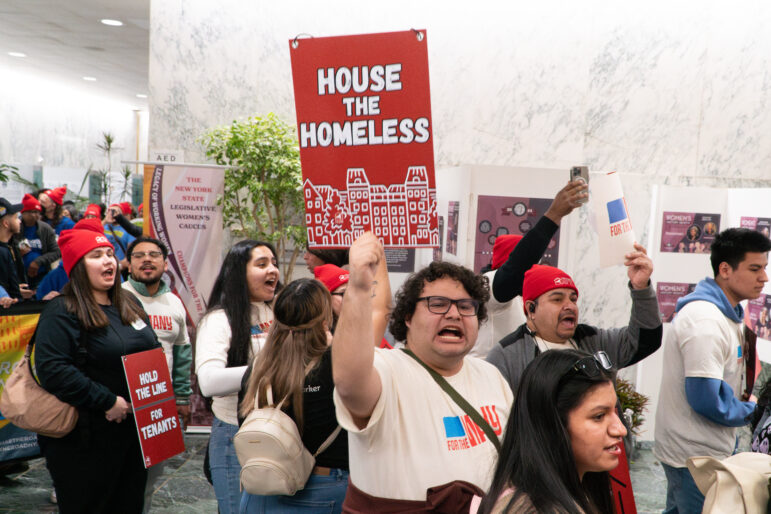‘The Good Life: New Public Spaces For Recreation,’ curated by Zoe Ryan, through Oct. 1 at Hudson River Park’s Pier 40.
There are many different kinds of empty space in cities. Empty lots, abandoned buildings, and neglected public parks are only a few of the most obvious. There are also barren traffic islands, underutilized plazas, and overlooked urban objects such as bins, benches and sidewalk railings. Emptiness ensues when large plots of land and public buildings are designated for a single use, as with racetracks, ballparks and concert venues, or when a huge amount of public parking is needed only once or twice a week.
The exhibit “The Good Life: New Public Spaces for Recreation,” sponsored by the Van Alen Institute — a public-sphere design group named after Chrysler Building architect William Van Alen — addresses the architectural challenges posed by the preponderance of empty public spaces in our cities. By portraying 68 projects from all over the world — some by prominent architects, others by local artists and activists — the exhibition illustrates the surprisingly diverse number of strategies and possibilities for their reclamation.
Stan Allen, dean of the Princeton School of Architecture, headlines the show with a commissioned design for a contemporary music center just outside the large Taiwanese city of Taichung. The sprawling site is designed to meet the special demands of a concert venue holding up to 18,000 spectators while attracting picnickers and pedestrians at other times of day and night. Another project, undertaken by two Danish artists, attempts to enliven the huge and normally empty Alexanderplatz at the heart of former East Berlin by arranging 100 blue deck chairs, literally the kind you might see on the deck of a cruise liner, in the middle of the square. Judging by their own reports and photos, the artists — dressed in goofy blue service uniforms — were able to draw commuters, shoppers and tourists into a more contemplative and relaxing relationship with the square.
Several high-profile projects for New York City are also included in the show. However, fairly detailed renderings and project descriptions of the North Plaza at Lincoln Center and the High Line in Chelsea, both designed by Diller Scofidio + Renfro, and the master plan for the East River Waterfront, by Richard Rogers and ShoP Architects, are readily available elsewhere; much of it can be found online. If these are of any value in the present context, it’s only in relation to the much smaller-scale initiatives by city and neighborhood locals. At a time when billions of dollars are being spent on mega-developments in Manhattan and Brooklyn, “The Good Life” shows us how revitalization can occur with just a few well-placed chairs in a public plaza. For those interested in genuine, widespread urban renewal in other parts of the city, this is the show’s true contribution.
For example, the Green Guerrillas, who helped transform low-income neighborhoods on the Lower East Side with community gardens in the 1970s, are now inspiring groups in London and Toronto to organize mass plantings on the “flashmob” model, covering everything from neglected traffic islands to the spaces between sidewalks and the chain-link fencing of abandoned lots. Wouldn’t it be nice to see this come back to NYC, when the flashmob tools of email and text-messaging could help organize a huge number of neighborhood participants?
It’s examples like this that feed the imagination and rouse fantasies about how public money might be spent to empower underprivileged neighborhoods, not just by cleaning them up and encouraging businesses to move in, but by enabling neighbors themselves to take part in its rejuvenation. And there are many more just like it: From an impoverished part of East London, we hear about the community-wide construction of a “self-build” park which was designed to let members of the neighborhood build tepees, swing sets, and bridges (to nowhere); from San Francisco, there are metered parking spaces to “rent out” for the construction of temporary parks; and from Soweto, South Africa, we learn of a recycling program that gives local children the opportunity to make papier-maché art. The basic idea in each case is simple: as articulated by a community leader in Soweto, it’s to locate a forgotten or neglected area of the city and quite simply “give people a reason to be there.”
The biggest problem with the show is the overly narrow focus on recreation. “Recreation” is a concept that has come to denote, for better or worse, escapist forms of entertainment, or diversions and distractions centered around one’s self (video games, movies, jogging), whereas many of the show’s own best projects are community-wide experiments designed to promote neighborliness and civic participation. Even the most frivolous projects – for example, sidewalk railings in Dublin designed to play “The Girl from Ipanema” when hit with a stick – can be inspiring counterpoints to the monotony of a parking lot or even the consumerism of a street mall without necessarily needing to preoccupy or entertain.
The design of the exhibition is stunning — the location at Pier 40, at Houston Street and the West Side Highway, is itself a great example of the revitalization of public space. But one really needs to fork over the $12 for the book to get (and absorb) all the information desired.








